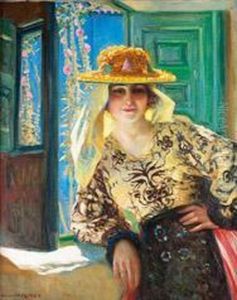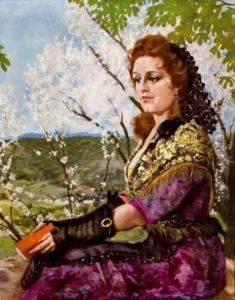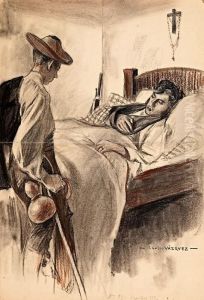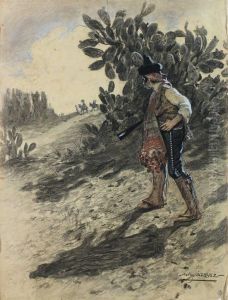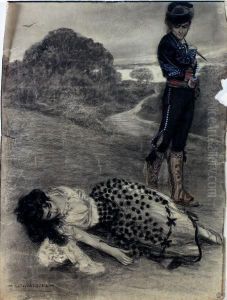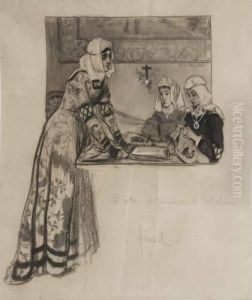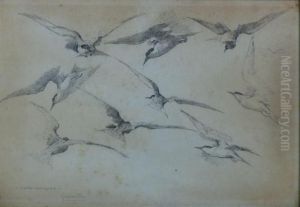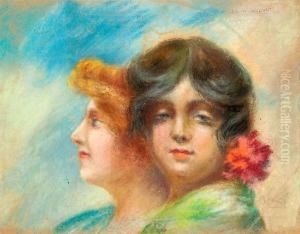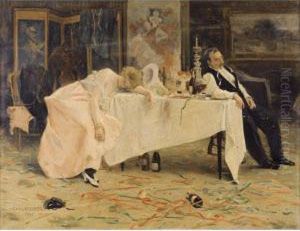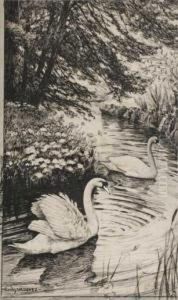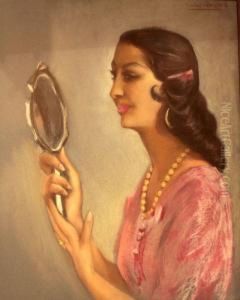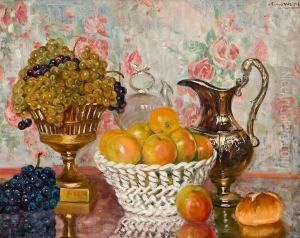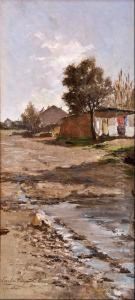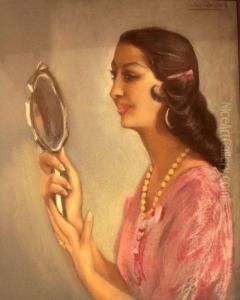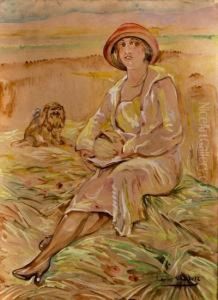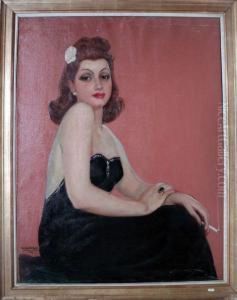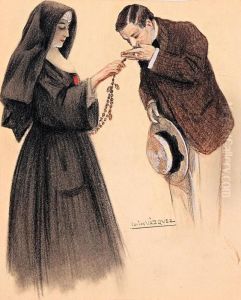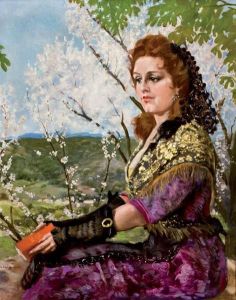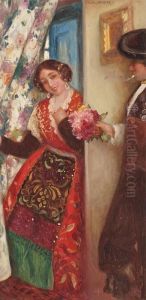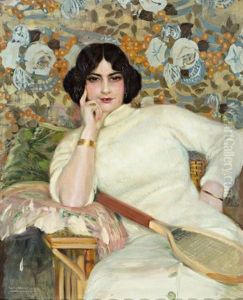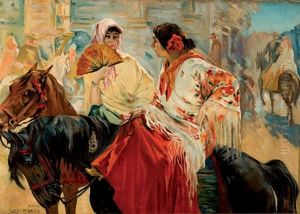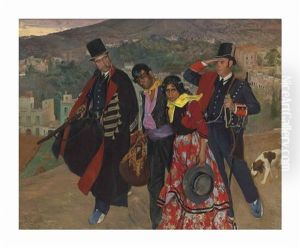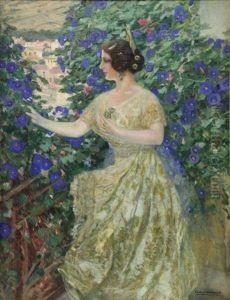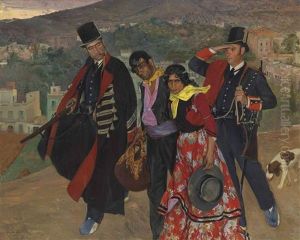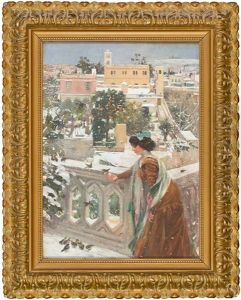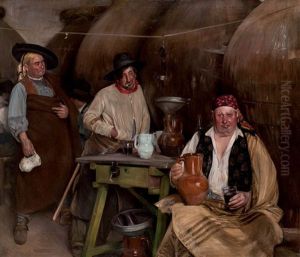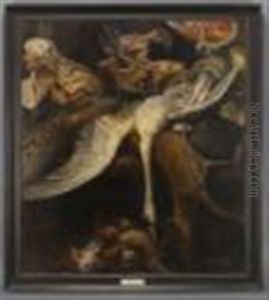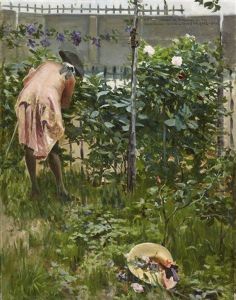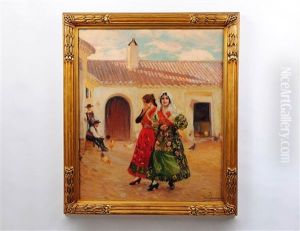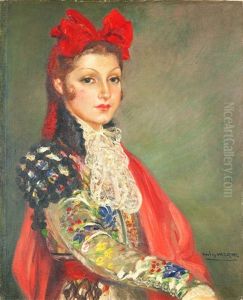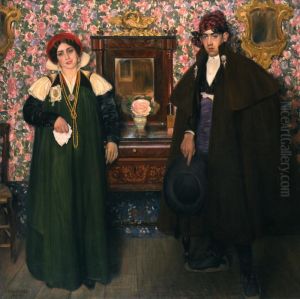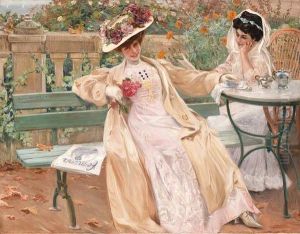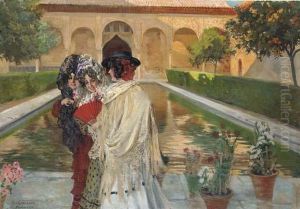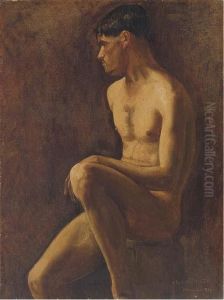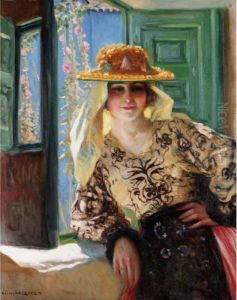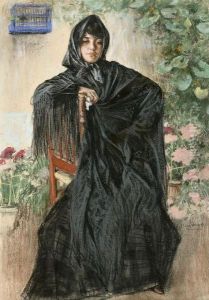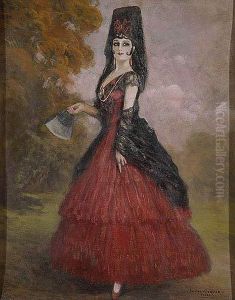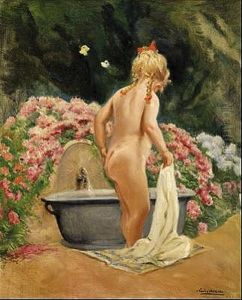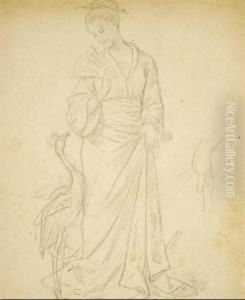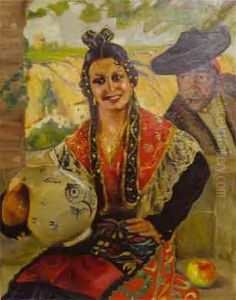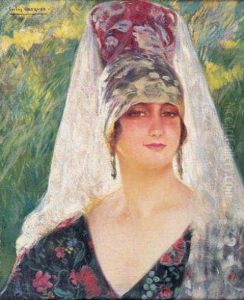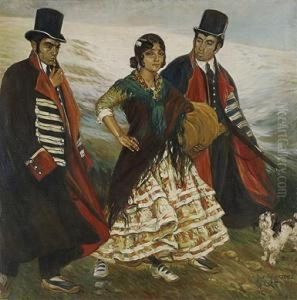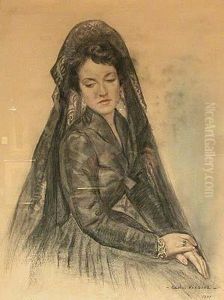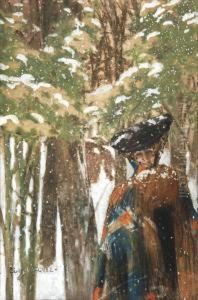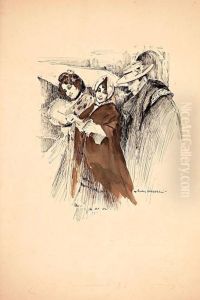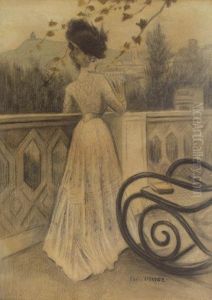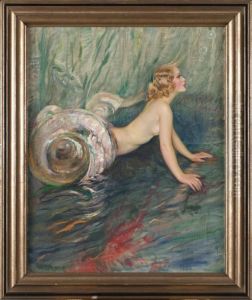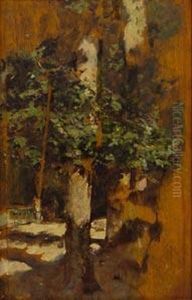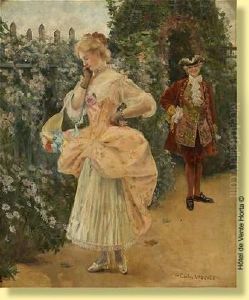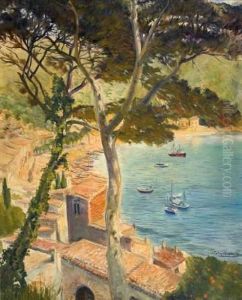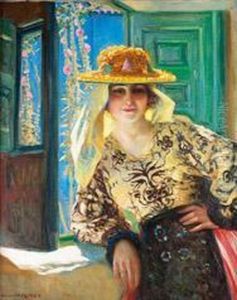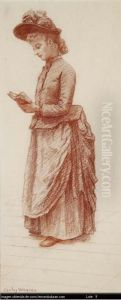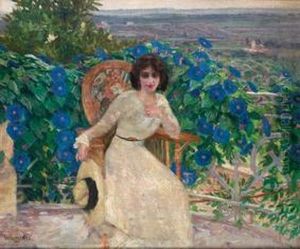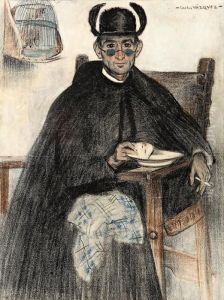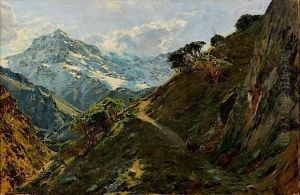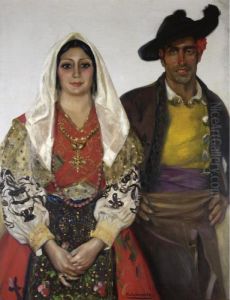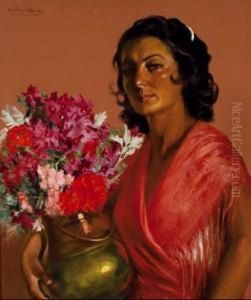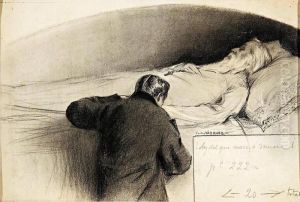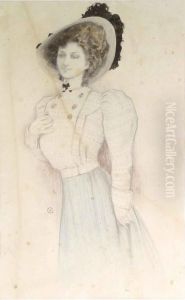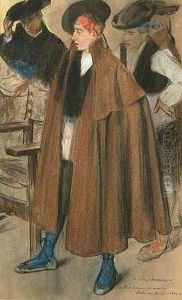Carlos Vazquez Ubeda Paintings
Carlos Vázquez Úbeda was a prominent Spanish painter born on August 25, 1869, in Ciudad Real, Spain. He is well-known for his skills in both landscape and genre painting, capturing the essence of the Spanish spirit and rural life in his works. Vázquez Úbeda received his initial training at the School of Fine Arts in Madrid.
His talent was recognized early on, and he was awarded a scholarship to further his studies in Rome. During his time in Italy, he was greatly influenced by the classical art and the Renaissance masters, which played a significant role in shaping his artistic approach. After his stint in Italy, he traveled to Paris, which was then the epicenter of the art world. The exposure to the vibrant art scene in Paris expanded his horizons and introduced him to modern artistic movements.
Carlos Vázquez Úbeda's works were often characterized by a realistic style, with a fine attention to detail and a particular focus on the effects of light. He was adept at capturing the nuances of the Spanish landscapes and the daily lives of its people, often portraying agricultural workers in his paintings. His work not only reflected the beauty of the Spanish countryside but also conveyed the hardships and the dignity of the rural populace.
Over his career, Vázquez Úbeda exhibited his work widely, garnering attention and acclaim. He participated in numerous exhibitions, both nationally and internationally, and his paintings were met with critical success. Some of his notable works include 'La siega' (The Harvest), 'La Maja de los cantares' (The Maja of the Songs), and 'La vuelta del campo' (Return from the Fields).
Carlos Vázquez Úbeda's contribution to Spanish art was significant, and he was honored with various awards throughout his lifetime. His legacy continued to influence Spanish artists even after his death on April 15, 1944, in Barcelona. Today, his works are held in high regard and can be found in various museums and private collections, preserving the rich cultural tapestry of Spain's art history.
